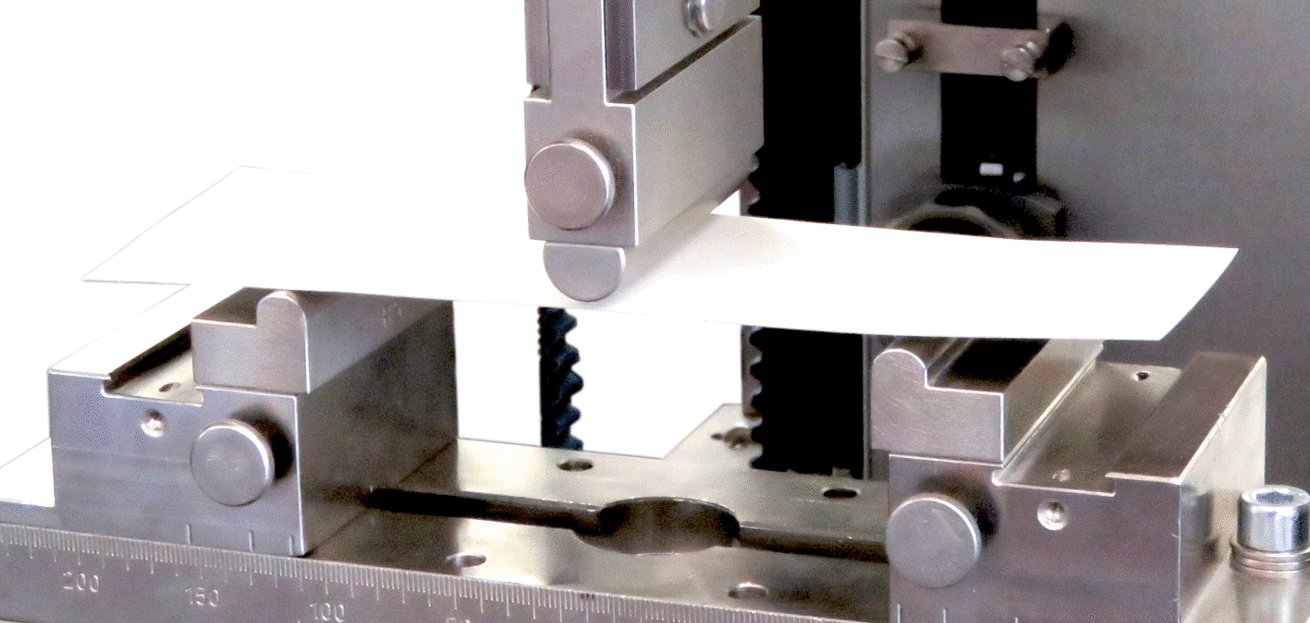


Characterise materials and products by justifying the choice of test parameters.
Critical learnings
Linking properties to the structure of materials
Choosing analysis parameters
Applying a standard

By selecting the appropriate techniques for a given characterization,
By safely performing the test or analysis according to a protocol,
By effectively interpreting the experimental results,
By preparing the samples according to a standard or protocol.

1. Characterisation techniques
There are numerous techniques for material characterization, each suited for analyzing specific properties. Here are some commonly used techniques:
Chemical composition analysis: SEM-EDS, IR spectroscopy, X-ray diffraction (XRD)...
Thermal analysis: Differential Scanning Calorimetry (DSC), Thermogravimetric Analysis (TGA)...
Mechanical analysis: Flexural testing, tensile testing, hardness testing...
Why did I choose the Characterization pathway?
For me, it is a pathway at the core of my knowledge

Caracterisation ?
Characterising materials means describing and evaluating their specific properties and behaviors. When characterizing a material, the goal is to understand its structure, chemical composition, morphology, as well as its physical, mechanical, thermal, electrical, optical properties, and more.
This often involves the use of advanced analytical and experimental techniques such as electron microscopy, spectroscopy, X-ray diffraction, thermogravimetry, differential thermal analysis, mass spectrometry, mechanical testing, and so on.
All characterisations presented in this portfolio have been conducted safely following a well-defined protocol or standard. Ready to delve into the details?
Example of characterisation


Contribution of the practical work:
First characterization of polymers
-
By selecting the appropriate techniques
-
By implementing the test in a safe manner
-
By effectively interpreting the experimental results

2. Polymer Identification
Context : Polymer Identification Lab - Group of 2 at the IUT SGM
I was provided with 10 polymer samples for the purpose of identifying their basic nature and determining certain physical characteristics.
The techniques I used to identify the polymers were:
-
Visual inspection: examining their appearance
-
Solvent testing
-
Flotation test
-
BELSTEIN test
-
Heat behavior, pyrolysis, smoke pH
-
Combustion test
I established a testing flowchart which proved useful for an industrial expertise.


Buoyancy test
Polymers have relative densities to water ranging from 0.9 to 1.4.
• If the sample floats, then the test is positive (indicating a density lower than 1).
Belstein Test
A method to detect the presence of chlorine:
-
If the flame turns green, then the test is positive (indicating the presence of chlorine in the plastic).
-
In the case of a positive test, the emitted vapors are also acidic (confirm with the pH paper test).

3. SAE (Work-based Learning Sequence) Characterization
Context : In a group of 3 at the IUT SGM, during the SAE Elaboration and Characterization, I was tasked with characterizing BMC plates to study the influence of compound composition on mechanical properties.
Subject : My topic involved developing different formulations of BMC premix and studying the influence of varying 2 parameters on 2 or 3 properties..
My approach was as follows: : I chose to study the influence of the percentage of calcium carbonate and the fiber content on the mechanical properties. To do this, I proposed to perform the following mechanical tests.
-
Three-point bending test
-
Kinetech test
-
Multiaxial impact test
Several formulations, view

Plates to characterise

Reflexive Analysis
This project was comprehensive as it allowed me to adopt an R&D approach to develop and characterize the material. Through this work, I realized that the skills were closely interconnected. Indeed, developing a material, characterizing it, analyzing the results, and further refining the compositions to achieve better outcomes aligns with the essence of my field of study.
I mainly focused on characterizing the material using mechanical tests. However, in the next subject, I will show you that we can also analyze the composition of the material itself. For me, it's like being an investigator where I establish a strategy to understand what is happening within the material itself.
Mechanical characterisation
Characterisation: A comprehensive approach
Parameter selection
Technique selection
Applying a norm
Sample preparation Implementing the test Analysing the results
01-Sample
The samples are prepared in several steps. First, the premix needs to be prepared, and after maturation, it is shaped using a hot compression press. Typically, the required maturation time is 2 to 4 days, depending on the formulation.
Note: The NF ISO 1268-8 standard - Methods of manufacturing test plates - Part 8: Compression molding of SMC and BMC, served as our guideline for sample preparation.

02 - Essais mécaniques
To analyse the results, click on the "view" bubbles.

4. PU resin for doming characterisation
Context :I am doing my internship at SŸNIA, a company specialising in printing and the European leader in doming (raised adhesive labels).
What is doming? Doming is a process that involves applying a transparent polyurethane resin onto an adhesive substrate.
Internship subject: The goal is to propose an improvement of "bio-based" polyurethane formulations for doming, which have reduced environmental impacts. Additionally, the objective is to characterise the obtained resin to assess if it meets the specifications outlined in the CDC (Customer's Desired Characteristics).
View
Reflexive analysis
Through this skill, I have realized that I have a strong affinity for research and development.
Within my work experience, I am developing a research-oriented mindset that I greatly enjoy. I test hypotheses through appropriate experimentation and carefully organize and interpret the theoretical aspects of experiments and analyses.
I have also improved in terms of precision and attention to detail. I am aware that even small variations can have significant consequences on the results.
I have acquired the competence to follow rigorous experimental protocols and demonstrate precision in my observations and measurements.
Chemical, thermal, rheological, and tribological characterisations
Characterisation: A comprehensive approach
Parameter selection
Technique selection
Applying a norm
Sample preparation Implementing the test Analysing the results

In order to determine the composition that will be used for creating scented dome labels, several characterisation tests were conducted.
For the optimized formulation I developed, the encapsulation of fragrance molecules is possible.
Shown here is the encapsulation of the "La vie est belle" perfume by Lancôme.
To analyse the results, click on "view."

